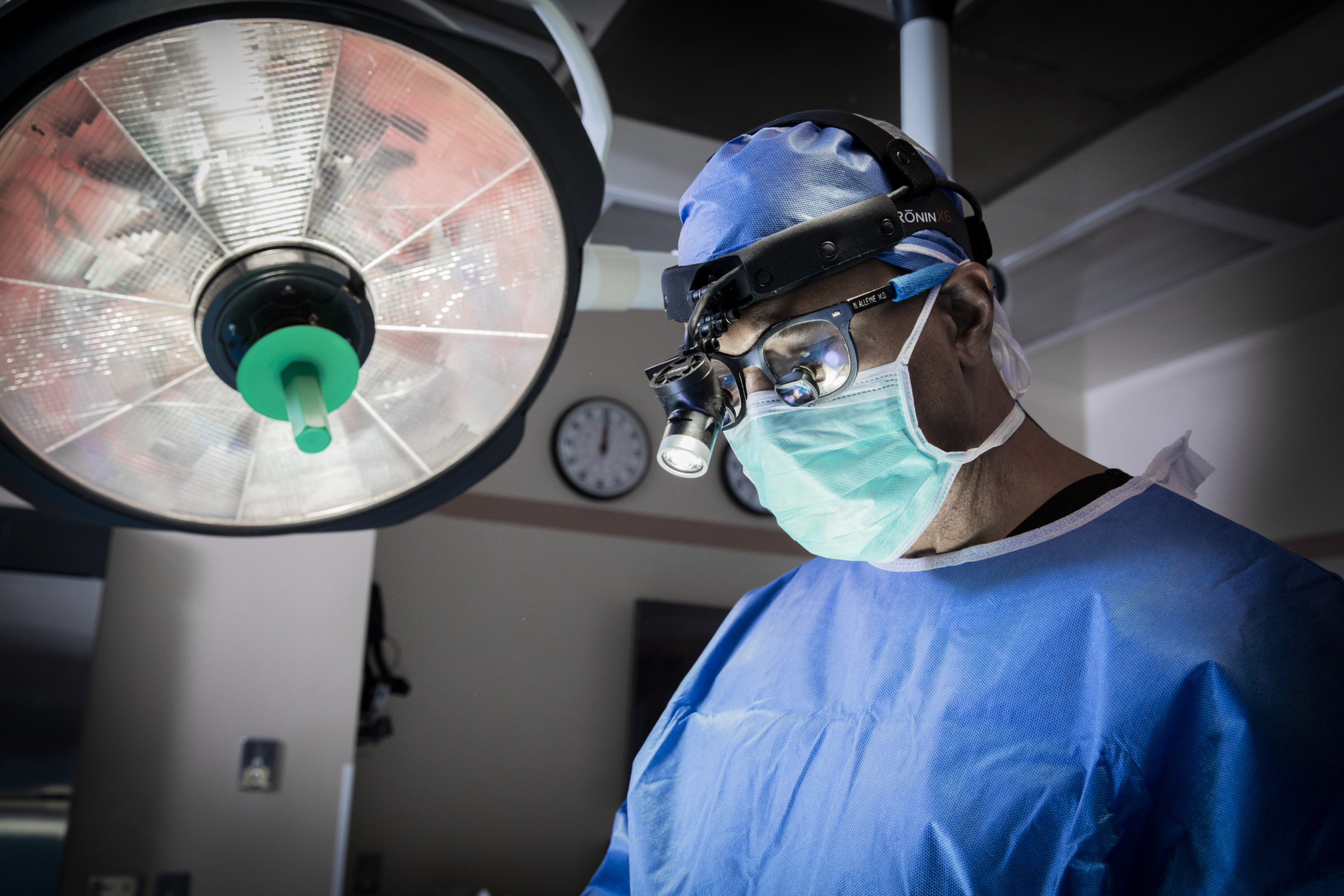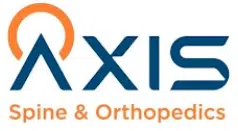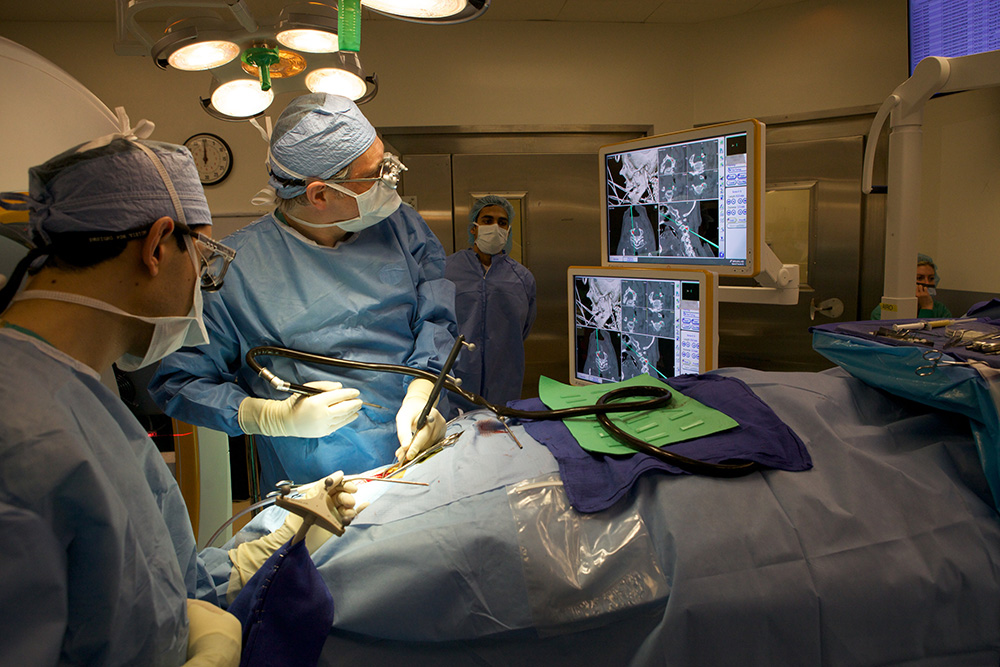Finding Affordable Options with the Best Spine Surgeons in St Louis MO
Finding Affordable Options with the Best Spine Surgeons in St Louis MO
Blog Article
A Review of Spinal Column Conditions That Frequently Cause Surgical Treatments
Back problems such as herniated discs, back constriction, and degenerative disc illness frequently necessitate surgical interventions when conservative treatments fail to minimize persistent signs and symptoms. Comprehending the nuances of each problem and the equivalent medical alternatives, such as discectomy or spine blend, is vital for reliable monitoring.
Herniated Discs
Although lots of individuals with herniated discs might discover alleviation with conventional therapies, surgical procedure becomes a necessary consideration when signs and symptoms linger or intensify - best spine surgeons in st louis mo. A herniated disc happens when the soft internal gel of a back disc extends with its external layer, possibly leading and compressing nearby nerves to pain, pins and needles, or weakness in the extremities
Conservative administration usually consists of physical treatment, pain medications, and corticosteroid injections, which aim to decrease inflammation and enhance feature. In instances where these approaches fail to reduce debilitating signs and symptoms, medical choices may be explored.
One of the most common surgical treatment for herniated discs is a discectomy, which includes the elimination of the herniated portion of the disc to eliminate pressure on the influenced nerve root. In more extreme situations, back blend might be required to support the influenced vertebrae.
Individuals are suggested to review the prospective risks and advantages of surgery with their health care company to make an informed choice. Ultimately, the goal of any type of medical treatment is to recover feature, ease pain, and enhance total high quality of life for individuals experiencing herniated discs.
Back Stenosis
Back constriction takes place when the rooms within the spine slim, bring about raised stress on the spine and nerves. This problem can develop in numerous regions of the back, consisting of the cervical and lumbar areas, often due to age-related changes, such as degenerative disc illness, arthritis, or enlarging of tendons.
Clients with back constriction may present with symptoms that consist of discomfort, pins and needles, tingling, or weak point, mostly in the arms or legs. These symptoms can be worsened by activities that include standing or strolling, commonly leading people to look for alleviation through traditional therapies like physical therapy, medicines, or epidural steroid shots.
Nevertheless, when these non-surgical interventions fail to give adequate relief, medical alternatives might be considered. Typical medical treatments for spinal stenosis consist of laminectomy, which entails the removal of component of the vertebra to alleviate pressure, and back combination, which stabilizes the damaged location.
Spondylolisthesis
Spondylolisthesis takes place when one vertebra slips ahead over one more, resulting in imbalance of the back. This problem can arise from different factors, consisting of congenital problems, injury, or degenerative adjustments in the spinal column. It is most frequently observed in the lumbar region, especially at the L4-L5 and L5-S1 degrees.

Therapy alternatives differ based upon the seriousness of the slippage and the symptoms presented. Traditional actions, including physical therapy, discomfort monitoring, and activity modification, are typically the first line of protection. Nevertheless, when non-surgical approaches stop working to alleviate signs or when significant nerve compression is existing, surgical treatment may be necessitated. Surgical options can include spine combination or decompression procedures, targeted at restoring positioning and minimizing neurological signs and symptoms. click resources Early medical diagnosis and suitable monitoring are important for optimum end results in patients with spondylolisthesis.
Degenerative Disc Condition

The condition can be identified with a mix of clinical examination, imaging studies, and individual history. When these methods stop working to provide appropriate alleviation, medical treatments might be considered.
Surgical alternatives for DDD might include spinal combination or synthetic disc substitute, intended at stabilizing the affected section and relieving pain (best spine surgeons in st louis mo). Eventually, the option of therapy is embellished, taking into consideration the extent of the problem, client wellness, and way of life aspects
Back Growths

Back lumps can develop from various variables, consisting of genetic tendency, environmental impacts, and pre-existing medical conditions. Patients may provide with a range of signs, consisting of localized pain, neurological deficiencies, weak point, or adjustments in digestive tract and bladder function, depending on the growth's size and area.
Diagnosis commonly includes imaging studies such as MRI or CT scans, which help delineate the tumor's characteristics and effect on surrounding structures. In evaluating therapy choices, the lump's quality, place, and type are essential factors to consider. Surgical treatment might be warranted to minimize signs, acquire a biopsy, or remove the lump totally. The objective of surgical treatment advice is typically to decompress neural aspects and support the spinal column. Adjuvant treatments, including radiation or radiation treatment, might additionally be needed depending on the tumor's nature. Early detection and treatment are crucial for maximizing end results in people with spinal lumps.
Conclusion
In recap, spine conditions such as herniated discs, spine stenosis, spondylolisthesis, degenerative disc illness, and spine lumps often demand medical intervention because of their possible to trigger significant discomfort and useful disability. While traditional treatments may provide momentary relief, surgical choices become important when signs linger or aggravate. Timely medical diagnosis and treatment play an important role in restoring function and boosting the quality of life for affected people, highlighting the importance of detailed spinal treatment.

Report this page